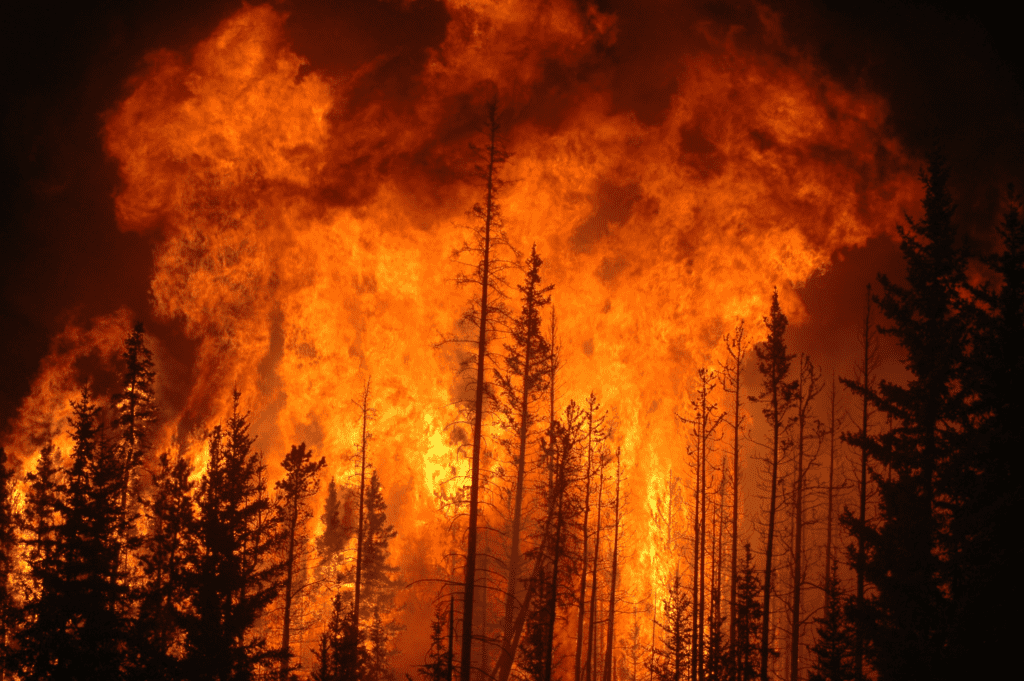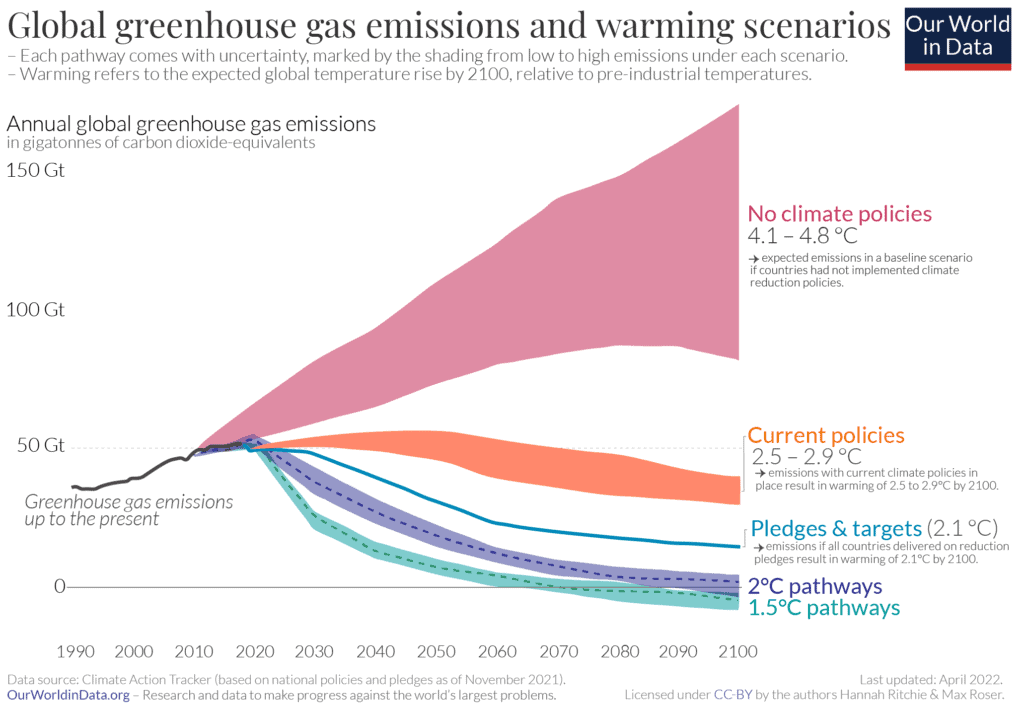“There are ample reasons to suspect that climate change could result in a global catastrophe,” the authors of a new study write. The paper, which is more of a research proposal than an actual study, was authored by prominent climate researchers and notes that we don’t truly understand what the worst climate scenarios would mean for us. Based on how things are going, we’d be wise to start focusing on this more.

Cascading risks
Researchers have been explaining that climate change is catastrophic for decades. Recently, major political figures, including heads of state are finally starting to acknowledge the magnitude of this threat. Just last week, President Biden warned that the clock is ticking toward a climate catastrophe — a signal that maybe, just maybe, we may need to start taking climate change seriously. But acknowledging that it’s a big problem is just the first step.
How big of a problem is it? Is it an existential threat? Could it literally wipe out humanity? Could it change our way of living fundamentally, bring us back to the Dark Ages, or is it “just” as bad as the COVID-19 pandemic?
At first glance, the idea that climate change could be an existential threat to humanity seems exaggerated. After all, even in the direst scenarios, climate change would “only” kill or relocate a few hundred million people. Setting aside for a moment the sheer magnitude of that catastrophe, it doesn’t sound like something like that could wipe out billions of people, right?
Well, society doesn’t really work that way. Think of the COVID-19 pandemic, for instance. Let’s simplify things and say the virus would have killed 2% of humans on Earth if left unchecked. We kept it in check somewhat with lockdowns and restrictions, we’ve developed a vaccine in a year, and still, it has caused a huge disruption in our society (a disruption that’s still unfolding). If it had actually killed 2% of the population, the results would have been catastrophic and would have cascaded in ways that are hard to predict. Herein lies the problem: problems aren’t problems in a void, they create a domino effect that ripples throughout society.
If climate change makes some areas unlivable (which it’s already doing), if it affects global food production and global health, if it causes water scarcity for millions of people, this could translate into social unrest, war, and who knows how many other problems. We need to understand how bad things can get, the authors of the new study urge.
“There are plenty of reasons to believe climate change could become catastrophic, even at modest levels of warming,” said lead author Dr. Luke Kemp from Cambridge’s Centre for the Study of Existential Risk. “Climate change has played a role in every mass extinction event. It has helped fell empires and shaped history. Even the modern world seems adapted to a particular climate niche,” he said.
“Paths to disaster are not limited to the direct impacts of high temperatures, such as extreme weather events. Knock-on effects such as financial crises, conflict, and new disease outbreaks could trigger other calamities, and impede recovery from potential disasters such as nuclear war.”
Two degrees, three degrees

Across the globe, average temperatures have increased by 1.1 degrees Celsius. In some densely populated areas, temperatures have risen by several degrees, reaching summer temperatures that are not suitable for the human body. Even in areas not traditionally plagued by heatwaves, temperatures are surging already. So what happens if we reach a global temperature rise of 3 degrees, or even more?
“The more we learn about how our planet functions, the greater the reason for concern,” said co-author Prof Johan Rockström, Director of the Potsdam Institute for Climate Impact Research. “We increasingly understand that our planet is a more sophisticated and fragile organism. We must do the math of disaster in order to avoid it,” he said.
These scenarios are not all that unlikely, and Kemp and colleagues warn that the risks of such scenarios have been grossly understudied. Sure, we’d like to think that we can manage the heating of “just” 1.5 degrees Celsius (although that chance is almost gone already) or 2 degrees Celsius, but the reality is, our current trends overshoot those by quite a lot. Every extra fraction of a degree translates into massive challenges — it’s not like one extra degree neatly translates into temperatures that are higher by one degree every day. Higher average temperatures mean more and stronger extreme weather events, more extreme storms, more heatwaves, the whole package.

If we achieve warming of 3 degrees by 2070 (which is perfectly plausible based on what’s happening now), over 2 billion people would live in areas of extreme heat. These areas would be subjected to extreme stress, and the countries in these areas are fragile democracies.
“By 2070, these temperatures and the social and political consequences will directly affect two nuclear powers, and seven maximum containment laboratories housing the most dangerous pathogens. There is serious potential for disastrous knock-on effects,” Kemp said.
The four horsemen of climate doom
But even this isn’t the worst that could happen. If the atmospheric CO2 doubles from preindustrial levels (we’re about halfway to that), there’s a roughly 18% chance global temperatures will increase by over 4.5 degrees Celsius. If that happens, we’re in over our heads.
Basically, herein lies the issue the study calls more attention to: what happens if we reach the worst climate scenarios?
“We know that temperature rise has a ‘fat tail’, which means a wide range of lower probability but potentially extreme outcomes. Facing a future of accelerating climate change while remaining blind to worst-case scenarios is naive risk-management at best and fatally foolish at worst,” added co-author Prof Kristie Ebi from the University of Washington.
The scientists propose a research agenda aptly based on the four horsemen of the apocalypse. The “four horsemen” of the climate endgame are famine and malnutrition, extreme weather, conflict, and vector-borne diseases. This is what we need to look into if we want to understand what type of catastrophic threat climate change poses.
For instance, climate change poses great threats to agriculture — we’ve known this for a long time. The more temperatures rise, the more they threaten the food supply, and the probability of “breadbasket failures” increases. Some of the most productive agricultural areas are threatened most by climate change. These problems will be compounded by extreme weather, which could trigger massive agricultural meltdowns.
In the case of a “Hothouse Earth” with rampant climate change, we also have to start looking at other potential threats: from viruses released by permafrost melt to sea level rise that will make many coastlines unlivable, we have to start thinking about the worst case scenarios. It’s not fun at all, it’s not what we’re hoping for, but it’s definitely not out of the question the way things are going.
It’s not the first time researchers have urged a reconsideration of climate change as an existential threat. It’s easy to dismiss it and cynically argue that even if the worst were to happen, billions of people could still go on with their lives — but that’s just blissful ignorance.
The COVID-19 pandemic has highlighted just how interconnected our world has become — for better or for worse. Even relatively small disruptions can cascade into large-scale societal problems, and climate change is anything but a small disruption. If stopping COVID-19 was like putting the brakes on a bike or a small car, climate change is like an 18-wheel truck: it’s gonna take a lot longer to brake, and the impact is much more severe. We have to understand the worst that can happen, even as we try to avoid it.
The paper was published in the journal Earth, Atmospheric, and Planetary Sciences.






